Pickleball Strategy
Pickleball is a game that requires brainpower and we would like to impart basic tactical knowledge in this section.
TIPS TO TAKE YOUR PICKLEBALL GAME TO THE NEXT LEVEL
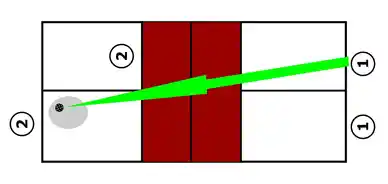
The serve
Especially in doubles, you should be as careful as possible to serve safely. Unlike in tennis, the serve is not a real winning shot and is usually easy to return. In pickleball, you only have one serve, and if you risk a lot, you are more likely to make a mistake than to gain an advantage from the serve. Basically, you should serve quite long so that you keep your opponent back and do not put them in an unwanted position at the net. If the returner is right-handed, you should perhaps aim a little towards the right half of the court, as shown in the picture, so that he has to return with a backhand, which is very likely to be weaker.
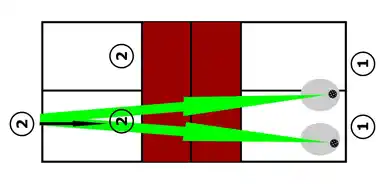
The setback
When returning, you should definitely make use of the double-bounce rule. The opponent has to let the return bounce and cannot play the ball out of the air. For this reason, I try to play the return as far into the opponent's field as possible in order to keep them back at the end line and also to give myself more time to get to the net. So after the return, it is essential to sprint to the net as quickly as possible in order to be on the same level as your partner in the attacking position. This shot is also not a winning shot and should be played with little risk. It is preferable to play into the middle, as opponents are sometimes unsure who should take it, or you can play the ball along the line to the backhand of a right-handed player if that is their weaker side.
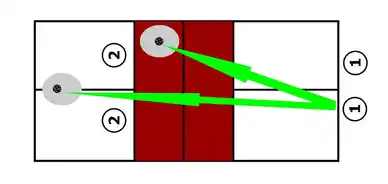
The Third Strike
This is where pickleball starts to be really fun. With the third hit from behind, I'm on the defensive. My opponents are at the net and are already waiting to attack with a volley. The question is how do I best react to this, and in my opinion there are two good solutions.
1.) The hard, long ball, preferably through the middle. It has to be played really hard so that the opponent only has the chance to block it and the ball then lands in the middle of the court. Then I can take 2-3 steps forward to play the 5th ball easily over the net into the non-volley zone and am then ready for the short/short game at the net.
2.) The other variant would be to immediately play a soft ball into the NVZ to neutralize the ball and force the opponent into the short/short game, thereby forcing them into defense.
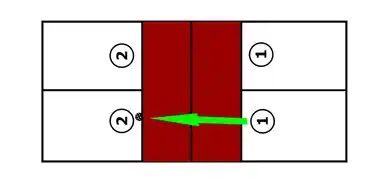
The first flip / volley
In my opinion, you now have two options to speed up the game and attack. 1.) The worse option in my opinion is the flip. The ball is below the edge of the net and I flip the ball quickly and high onto my body. The disadvantage here is that the flight path is always from bottom to top and the opponent has the opportunity to block the shot. 2.) Punch volley: An aggressive attack volley that comes about when a ball is above the edge of the net and is therefore ready for attack.

The Short-Short Game
After the ball has been neutralized, a short-short game often occurs, which the Americans call dinking. The main thing here is to be patient and wait for the ball that you can attack. The ball should therefore be kept flat and short to prevent the opponent from attacking.
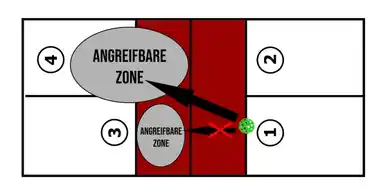
Pass to the player who is standing at the back.
A tactical error that I often see is that in the game situation shown, player 1 passes to his opponent (player 3). As shown in the graphic, player 4 would be the better option. Due to his position, player 4 is in defense and player 3 is more in attack, and with player 4 I have a much larger attack zone and better angles for playing out or attacking the feet.